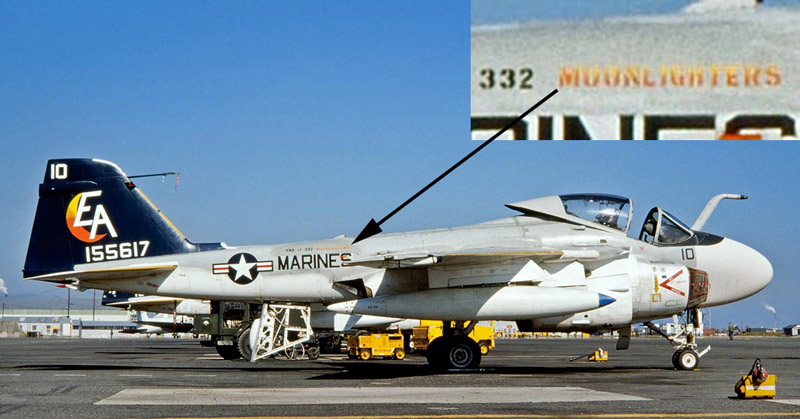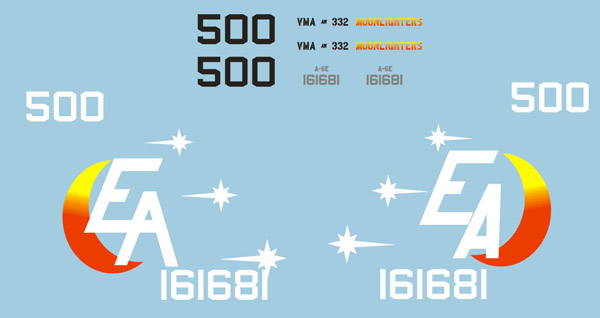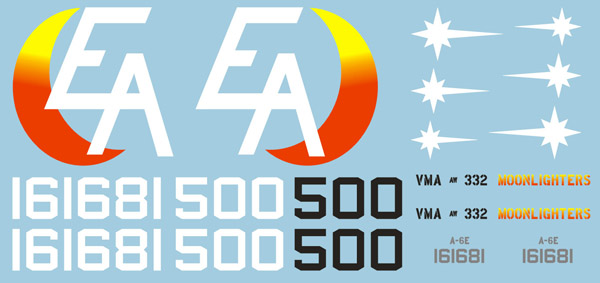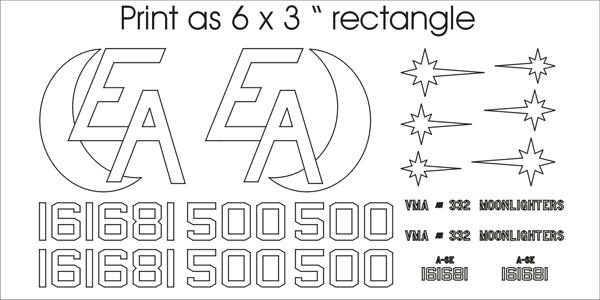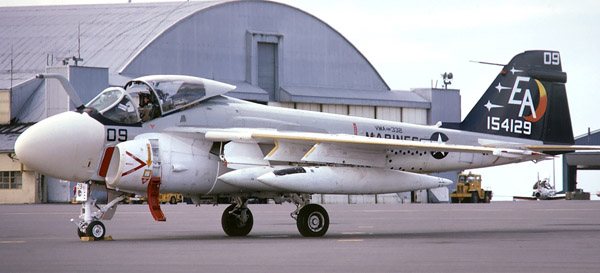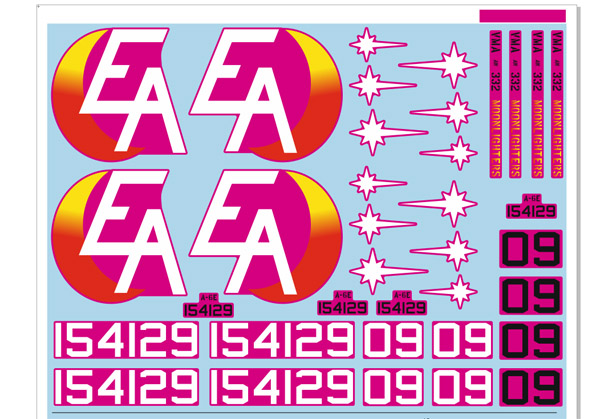Note that the customer only needed a small set of markings, since all the other decals are included in the kit:
|
a. BuNo (large) on vertical tail, white (2) b. BuNo (small) plus a/c type on rear fuselage, black (2) c. Modex numbers, black and white (2 each) d. Unit text on fuselage 'VMA(AW)-332 MOONLIGHTERS' (2) e. Unit tail markings: EA plus quarter moon (2) |
Therefore, it would be a relatively quick project.

